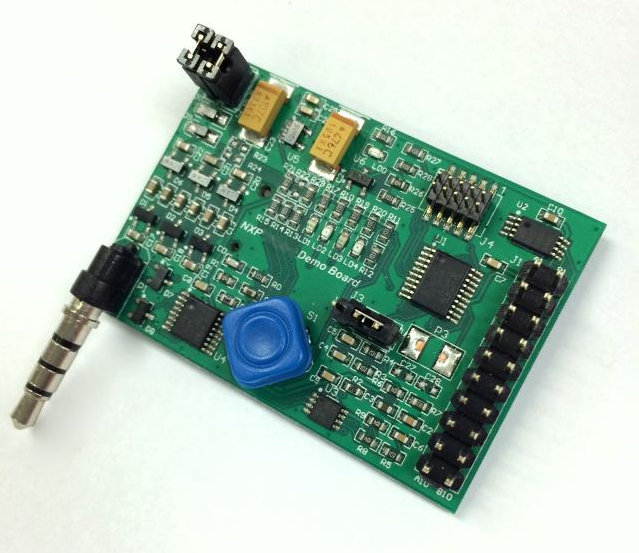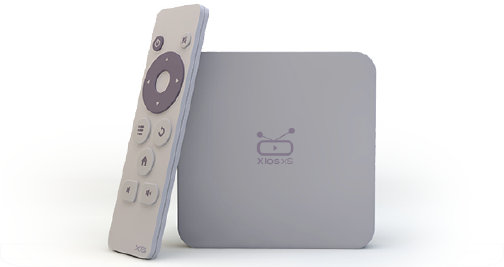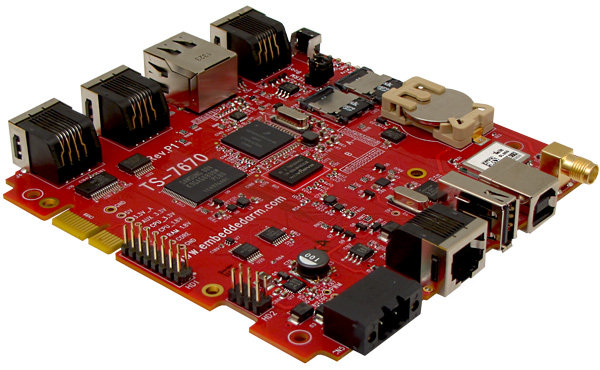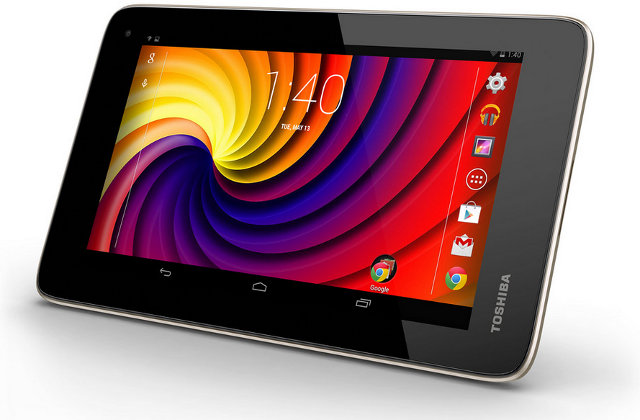VoCore Wi-Fi module selling for $15 to $20, and it’s corresponding VoCore Dock with Ethernet has been quite popular, and at the time of writing, the project has already received $40,000 in funding with 50 more days to go. But if you’d rather get something for the same price, a few months early, and an already FCC/CE certified and proven module and tiny IoT server, AsiaRF has also launched a crowdfunding campaign for their AWM002 Wi-Fi module running OpenWRT on the same Ralink RT5350 found on the VoCore. as well as AWM002 Tiny Kit which adds Ethernet and USB, and a larger board with easier access to all ports and I/Os. As a reminder, let’s go through AWM002 specifications again: SoC – Mediatek/Ralink RT5350 MIPS 74KEc core @ 360 MHz dual band 802.11n Wi-Fi with data Rate up to 150Mbps, hardware NAT, QoS, TCP/UDP/IP checksum offloading. System Memory – 32 MB Storage […]
Linaro 14.05 Released with Linux Kernel 3.15, Android 4.4.2, and Ubuntu Trusty
Linaro 14.05 has been released with Linux Kernel 3.15-rc5 (baseline), Linux Kernel 3.10.40 (LSK), Android 4.4.2, and Ubuntu has been switched from Saucy to Trusty. More work has been done on big.LITTLE processing and ARMv8 support with notably completing bootstrapping with Debian 64-bit. New hardware platform have started to pop-up such as TI J6-Vayu which must be an evaluation board for Texas Instruments Jacinto 6 dual core Cortex A15 SoC for automotive application, as well as IFC6410, a Snapdragon 600 development board which got a Ubuntu LEB image. This month also marks the first release of Linaro GCC 4.9 toolchain. Here are the highlights of this release: Linux Linaro 3.15-rc5-2014.05 new Android topic (linaro-android-3.15-experimental) uses the resent AOSP code base GATOR version 5.18 (same version as in 2014.04) uprobes topic removed as all patches have been accepted into mainline updated big-LITTLE-pmu topic from ARM LT updated basic Capri board support […]
NXP Smartphone Quick-Jack Solution Connects to Your Smartphone Audio Jack and Interfaces with Sensors, HMI Devices
We already knew the audio jack on your mobile device was not only for your headset, thanks to small items like Pressy hardware button. But it’s actually possible to do much more, as shown by NXP smartphone quick-jack solution, a board that can interface sensors to your Android smartphone / tablet or iPhone / iPad via the headphone/microphone jack of your device. The company claims it can be used for various applications such as cloud-based tracking of sensor data, external input devices to smartphone, wearable health monitors, personal exercise trackers, handheld weather stations, handheld inventory monitors, handheld/portable POS devices, and universal remote controls, using powered harvested from the audio jack, and optionally a battery. Let’s go through the hardware specifications of this little board codenamed OM13069: MCU – NXP LPC812 ARM Cortex M0+ MCU @ 30 MHz with 16KB flash, 4KB SRAM On-board peripherals – Joystick, temperature sensor, and LEDs […]
Pivos Unveils XIOS XS Android XBMC TV Box Powered by Amlogic AML8726-MX Processor
When XBMC Android development was announced in 2012, the main development platform was Pivos XIOS DS, a TV Box based on Amlogic AML8726-M1 that can run either XBMC Linux or Android, and the company (Pivos Group) was the main sponsor and contributor for XBMC on ARM. Contrary to many other companies that push faster and faster hardware, Pivos Group focuses on software and user’s experience, and they’ve just announced he successor of the Pivos XIOS DS, called the Pivos XIOS XS powered by Amlogic AML8726-MX dual core Cortex A9 processor and feature their own heavily custom version of Android called ToFu Media OS. Let’s go through the hardware specifications first: SoC – Amlogic AML8726-MX dual core Cortex A9 @ 1.5 GHz with Mali-400MP2 GPU System Memory – 1 GB DDR3 Storage – 8GB eMMC + micro SD card slot up to 32GB Video Output – HDMI 1.4b with CEC support […]
Technologic Systems TS-7670 Industrial Board Features Freescale i.MX286, Supports RAID-like System on SD Cards
Technologic Systems has unveiled an industrial board powered by Freescale i.MX286 ARM9 processor and a MCU part of NXP LPC1100 Cortex M0 series to to create a CDC ACM serial device on a host PC, and interfaces via UART, I2C, and SPI with the Freescale processor. The board targets applications such as fleet vehicle or asset tracking, point-of-sales (PoS), vending machines, data acquisition units, and data recorder modules. TS-7670 specifications: Processor – Freescale i.MX286 (1x ARM926EJ-S core @ up to 454MHz) MCU – NXP LPC Cortex M0 MCU in QFN32 package (LPC1114??) System Memory – 128MB to 256MB DDR2 RAM Storage – 2GB soldered NAND flash, 2x microSD slot with Doublestore support (similar RAID on SD card) Connectivity – 10/100 Ethernet port Wireless – Optional Telit Jupiter series multi-constellation GPS; optional CDMA, GPRS, or HSPA+ modules USB – USB host port, USB OTG port Other I/Os: 2x RS-232/interfaces (optional TTL […]
Toshiba Excite Go 7″ Android Tablet Powered by Intel Atom Quad Core Processor Sells for $110
If you still think that only products based on ARM can be inexpensive, Toshiba Excite Go might change your mind. The latest Toshiba tablet is somewhat similar to HP 7 Plus with a quad core AllWinner A31 SoC and a 7″ display with a resolution of 1024×600, but instead it features an Intel Atom quad core processor, and sells for just $10 more at $110 (MSRP), but CNET reports it might even sell for just $99. The complete specs have not been released, but here’s what we do know, and/or can speculate with educated guesses and pictures from Engadget: SoC – Intel Atom “Bay Trail” Quad core SoC. Probably one of the cheapest Bay Trail-T, so either Atom Z3735F or Z3735G both listed for $17 (Tray price). Z3735F supports up to 1Gb RAM, Z3735G up to 2GB RAM. Both are clocked at 1.33 GHz, and up to 1.83 GHz (Burst […]
Ugoos UT3 and UM3 Android TV Boxes With Rockchip RK3288 Available Soon
We’ve already seen a few RK3288 boards for upcoming Android TV boxes such as Zero Devices Z6C,Sunchip TV Box and HDMI Sticks, and Ugoos UT3. Most companies did not show off their complete products however, but Ugoos has now unveiled some pictures of their UT3 and UM3 Android TV boxes, and announced availability for next week. This is probably availability to resellers, but it should still mean RK3288 based TV devices should be available within a few weeks, especially since tablets such as Pipo P8 are already up to sale, and should start shipping within a few days. The specifications are very similar for both Ugoos UT3 and UM3: SoC – Rockchip RK3288 quad core CortexA17 @ 2.0 GHz + Mali-T764 GPU with support for OpenGL ES 1.1/2.0 /3.0, and OpenCL 1.1 System Memory – 2GB DDR3 (1GB optional) Storage – UT3 – 16GB NAND Flash (Options: 8, 32 or […]
Prpl Non-Profit Organization to Work on Linux, Android, and OpenWRT for MIPS based Processors
In what looks like an answer, albeit fairly late, to Linaro, the non-profit organization working on open source software for ARM based SoCs, a consortium of companies composed of Imagination Technologies, Broadcom, Cavium, Lantiq, Qualcomm, Ingenic, and a few others, has funded Prpl (pronounced Purple), “an open-source, community-driven, collaborative, non-profit foundation targeting and supporting the MIPS architecture—and open to others—with a focus on enabling next-generation datacenter-to-device portable software and virtualized architectures”. The Prpl foundation will focus on three key objectives: Portability – To create ISA agnostic software for rapid deployment across multiple architecture Virtualization & security – To enable multi-tenant, secure, software, environments in datacenter, networking & storage, home, mobile and embedded Heterogeneous Computing – To leverage compute resources enabling next generation big data analytics and mining Initially there will PEG (Prpl Engineering Group) to take of the following projects for 4 market segments (datacenter, network & storage, connected consumers, […]










